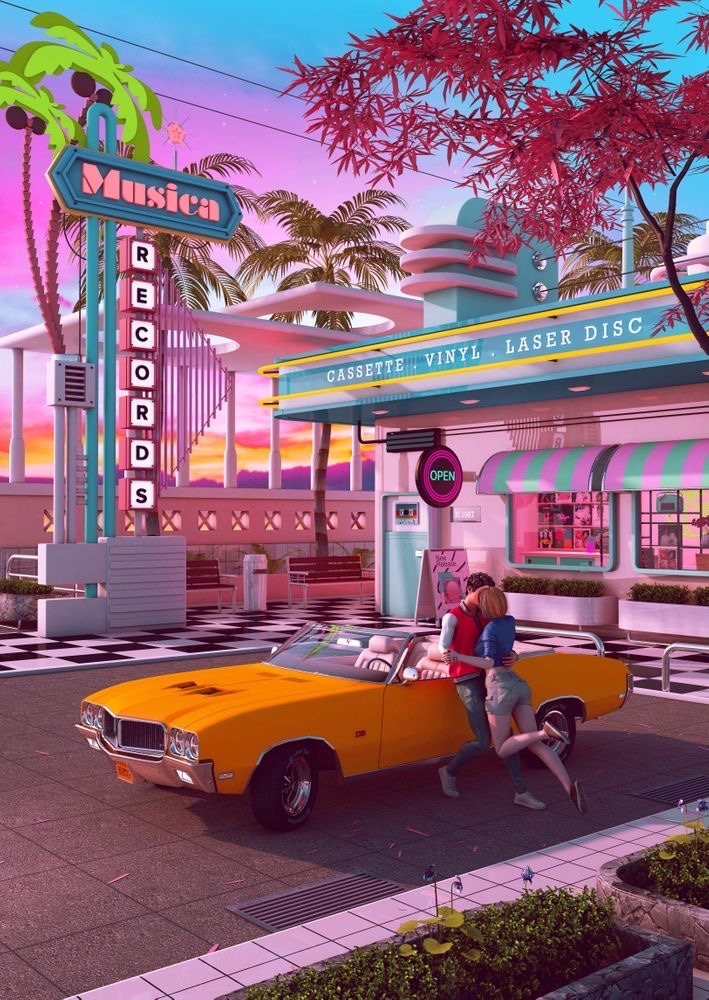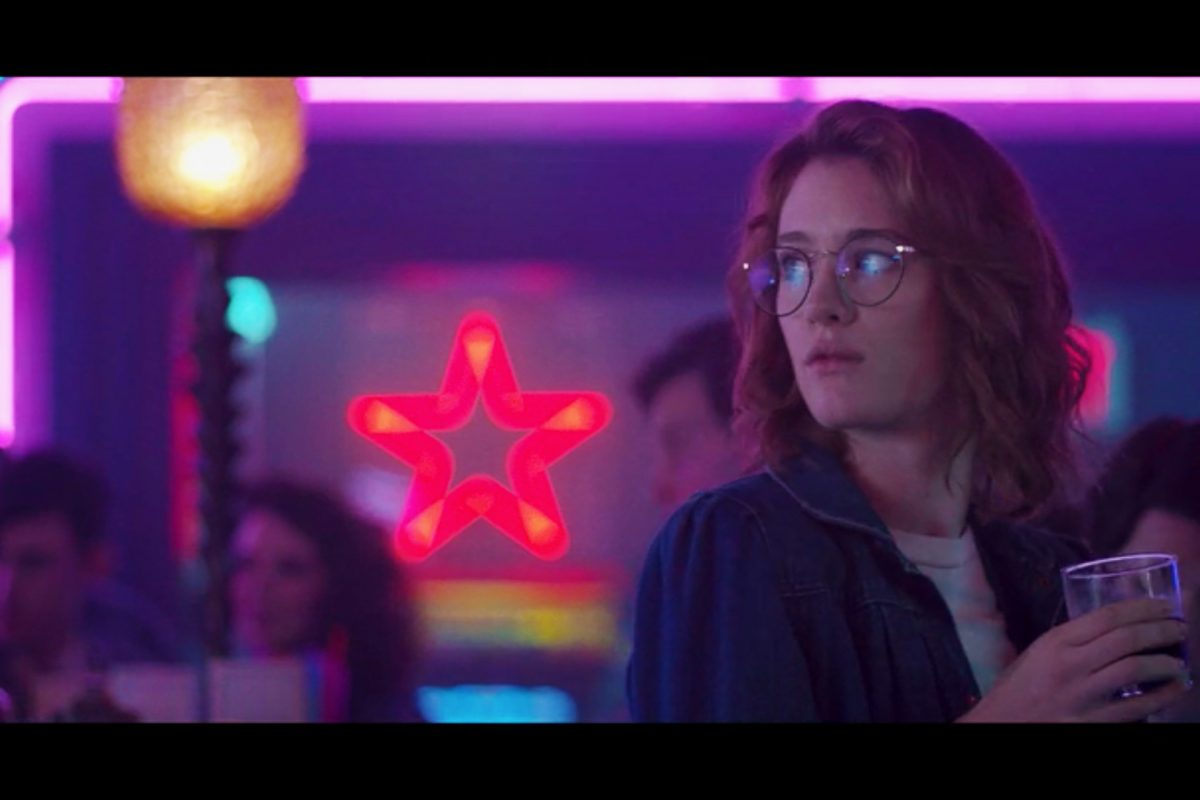-
Notifications
You must be signed in to change notification settings - Fork 2
Game Style
The game's art style is pixel art, a common staple of art seen in older video games where resolution was limited. Themes of surrealism and nostalgia influences the colour schemes and composition.
The genre of the game, Retrowave, can be defined by its suffix and prefix.
Retro: refers to something that is imitative of fashion/style from the past. In the case of this game, the era to imitate is the 80's, thus showcasing the appearance of a home which would have technology such as box TVs and NES consoles.
-wave: is a suffix that denotes a highly idealised/surrealist imagery of a certain theme. Therefore, retrowave is an aesthetic depiction of the 1980's. It sees the blurring of lines between reality and 80's tech.
(Lost In The 80's, 2021, Tumblr)
Early demonstrations of how pixel art can be created and animated using modern software.
The name of the genre - retrowave - is quite explanatory on inspiration. Like most retro games, inspiration is drawn directly from the attitudes, technologies and emotions of that time period. However, there is also rising popularity in the concept of 'aestheticism', the art of capturing certain concepts in a surreal, romanticised way (thus introducing us to -core and -wave). Therefore, this game is inspired both by the actual decade, and by other retrowave games.
The game's key concept of escaping your mother is inspired by a universal relatability to the sense of dread a child feels when purposely doing the wrong thing. While not everyone may have lived through the 80's, everyone has felt the end of the world was near as their mother's footsteps closed in on them.
The following is the official style guide for the game. Its main purpose is the ensure consistency amongst designers and also to remain true to the original concept of the game as development progresses. This guide is split into several sections, detailing visual design, colour palette, typography and other guidelines that may be helpful.
Every decade has its unique 'look' that we associate it with. In our game, two main technologies of the 80's comes into mind regarding the design of visuals.
Arcades - The Golden Age of arcade video games spanned the late 1970's to the early 1980's. In that time, arcade games made the best use of space they could. Unlike modern triple A graphics, games in those times were restricted by bits of the display. Game developers had to be especially careful with character and level design in order to create memorable and easy gameplay.
(Lawson, 2018, Shepherd Express)
An example of Mega Man's sprite throughout time. He is a popular arcade video game character since 1987.
(COMPLEX, N.D, Pinterest)
Graphics - Although television was already a thing since the 50's, the rise of cable brought on the surge of popularity and accessibility of television for the common people. Technology of graphics and imagery was certainly not on par to the current standard. The common visuals that is best associated with this era is geometric shapes, line and high-contrast, shiny textures.
(Craig, "KFMB News Eight intro late 80's", 10 August 2009)
(Edge Staff, 2015, gamesradar)
(Rarevision, "Rarevision 80s VHS Training Video Intro", 28 February 2013)
- 80's appropriate technology, such as box TV's, VCRs, gameboys etc.
- 80's arcade game layouts, such as big flashy animated text (see Typography for more information), geometric patterns etc.
- Strong character silhouettes, highly stylised character design (as seen with Mega Man)
- Pixel art as the art style, more specifically of 32x32 resolution with shading
- All character sprites are to be derived from a base sprite sheet in order to improve consistency and efficiency.
- Isometric layout, which locks all lines at 45°. This creates the sense of a 3D space in 2d pixel art.
Screencap of game Habbo Hotel, a popular pixel isometric game.
(Caldwell, 23 April 2019, Rock Paper Shotgun)
Colour scheme plays an important role in distinguishing a pixel game from a retrowave pixel game. Drawing upon inspiration of VCRS, television and arcade games, colour palettes will typically include bright, neon colours in contrast with dark blacks, blues and purples. Not only do these colours associate with 80's screens, they also construct the aestheticism of the game. Bright and neon colours may occur in unnatural settings of the home, such as the sky or shadings to convey surrealism. Thus, this makes the colour palette both the retro and the wave.
- Colours should be high saturation with highlight shading, especially on elements that won't be effected by shadow (i.e. UI, text and sprites that are supposed to 'emit' light)
- Interactable sprites should be lined with a bright colour (colour-coded to show their intent). This is a call-back to arcade-games, where outlines were used to distinguish interactables/characters from backdrop.
- As the game is set in the night time, the general palette should be cool colours (purple, blue, black etc.)
- Light emitting devices, when applicable, should emit warm neon colours.
Colour examples from relevant media (note these do not come from the 80's themselves, but are purposely crafted to be a highly stylised vision of the decade)
Reddit Community Palette (-Space-Cadet-, 2018, Reddit)
Screencap of game Hotline Miami (Klemke, 2015, The Refined Geek)
Still from San Junipero, episode of Black Mirror (Harris, 2016, Netflix)
(stuff)
- Anachronisms - As the game's style is one of retrowave, artistic liberties can be taken in order to further romanticism and surrealism. This may result in certain historical inaccuracies (i.e. lighting, use of 32x32 pixel art, isometric view), but that is fine as the game was not intended to be a history simulator.
Entities and Components
Interaction System
Unit Testing
Input Handling
UI
Game Screens and Areas
Map Generation
Basic Interactable Objects Design













